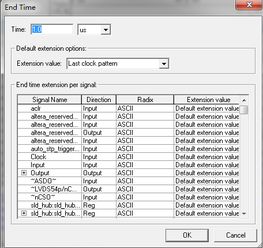
Vector File: A Comprehensive Guide
Vector files are an essential component in the world of graphic design, architecture, and engineering. They offer a level of precision and flexibility that is unmatched by raster files. In this article, we will delve into the intricacies of vector files, exploring their definition, types, uses, and benefits. Whether you are a graphic designer, an architect, or an engineer, understanding vector files is crucial for your work.
What is a Vector File?

A vector file is a type of digital file that contains geometric shapes, such as lines, curves, and polygons, which are defined by mathematical equations. Unlike raster files, which are made up of pixels, vector files can be scaled to any size without losing quality. This makes them ideal for projects that require high-resolution images, such as logos, illustrations, and technical drawings.
Types of Vector Files

There are several types of vector files, each with its own unique format and capabilities. Here are some of the most common ones:
| Format | Description |
|---|---|
| Adobe Illustrator (.ai) | Created by Adobe Systems, Illustrator is a popular vector graphics editor used for creating logos, illustrations, and complex designs. |
| Scalable Vector Graphics (.svg) | SVG is an XML-based vector image format that is widely used on the web for logos, icons, and other graphics that require high-quality scaling. |
| Portable Document Format (.pdf) | While primarily known as a document format, PDFs can also contain vector graphics, making them suitable for printing and sharing. |
| AutoCAD (.dwg, .dxf) | Used in the architecture and engineering industries, AutoCAD files contain vector-based drawings and designs. |
Uses of Vector Files

Vector files are used in a wide range of industries and applications. Here are some of the most common uses:
-
Graphic Design: Vector files are essential for creating logos, illustrations, and other graphics that require high-quality scaling.
-
Architecture: Vector files are used to create detailed architectural plans, including floor plans, elevations, and sections.
-
Engineering: Vector files are used to create technical drawings, including schematics, diagrams, and 3D models.
-
Animation: Vector files are used to create 2D and 3D animations, as they can be scaled without losing quality.
-
Web Design: Vector files are used to create logos, icons, and other graphics for websites, ensuring they look great on any device.
Benefits of Vector Files
Vector files offer several benefits over raster files, including:
-
Scalability: Vector files can be scaled to any size without losing quality, making them ideal for high-resolution printing and web graphics.
-
Flexibility: Vector files can be easily manipulated and modified, allowing designers to make changes without starting from scratch.
-
File Size: Vector files are typically smaller in size compared to raster files, making them easier to share and store.
-
Quality: Vector files produce high-quality images with crisp lines and smooth curves, ensuring that your designs look professional.
How to Create Vector Files
Creating vector files requires the use of vector graphics software, such as Adobe Illustrator, Inkscape, or CorelDRAW. Here’s a basic guide on how to create a vector file using Adobe Illustrator:
-
Open Adobe Illustrator and create a new document.
-
Use the drawing tools to create shapes and lines.
-
Adjust the shapes and lines using the selection and transformation tools.
-
Apply colors, gradients, and strokes to your shapes.
-
Save your file in the desired vector format.






